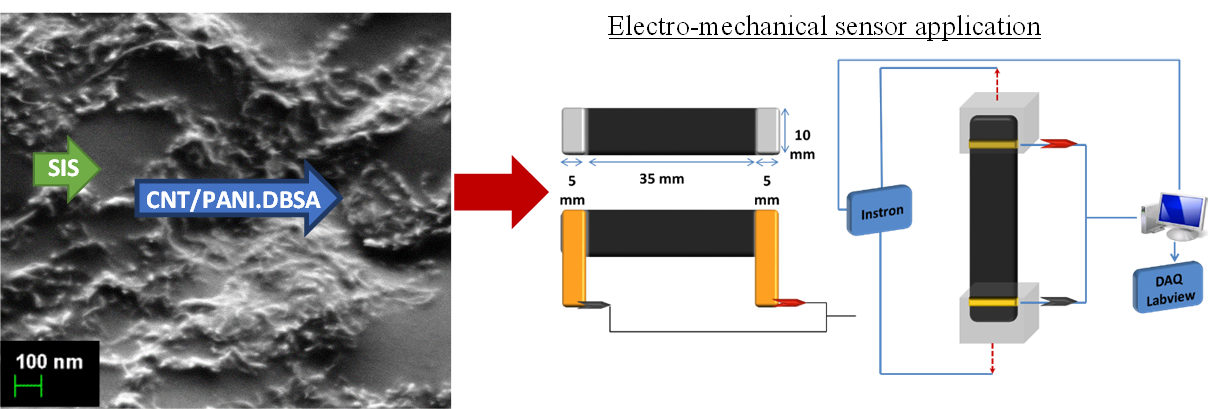In the past two decades, an increasing interest has been received in hybrid nano-composites. Hybrid materials contain nanoparticles which reinforce polymer matrices. The incorporation of organic materials within a polymeric matrix provides new opportunities in composite material applications. Such applications are electro-mechanical or electro-chemical sensors. An increasing demand of sensor system in the field of industry, security, health and etc. encourages development of efficient and low cost sensors. The sensor fabrication process includes incorporation of semiconducting or conducting behavior nano-particles. A new class of materials produced from incorporation of carbon nanotubes (CNT) and intrinsically conducting polymers (ICP's), such as polyaniline (PANI), in an elastomeric matrix. A crucial parameter for enhanced mechanical and electrical properties of conductive component is an efficient dispersion of the nano-filler in the polymer matrix. Therefore, a novel synthesis procedure is developed, which includes an in-situ inverse emulsion polymerization of aniline doped with dodecylbenzene sulfonic acid (DBSA) in the presence of dissolved (styrene-isoprene-styrene) SIS elastomer and CNT. Achievement of uniform and stable dispersions of CNT within the elastomeric matrix is considered a challenge. The techniques developed result in homogeneous exfoliated PANI coated nanotubes within the elastomeric matrix. The presence of CNT/PANI in the SIS elastomeric matrix affects thermal, mechanical and electrical properties of the nano-composites. High electrical conductivity values were obtained in the systems. The described novel approach provides an opportunity for developing tunable structures of remarkably distinctive architecture. The rapid electrical resistance response to the applied strain makes the developed nano-composites useful as sensitive strain sensors.


